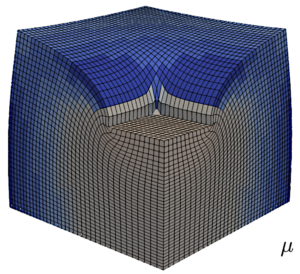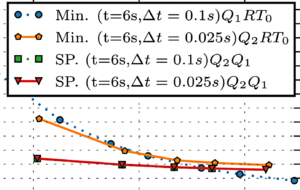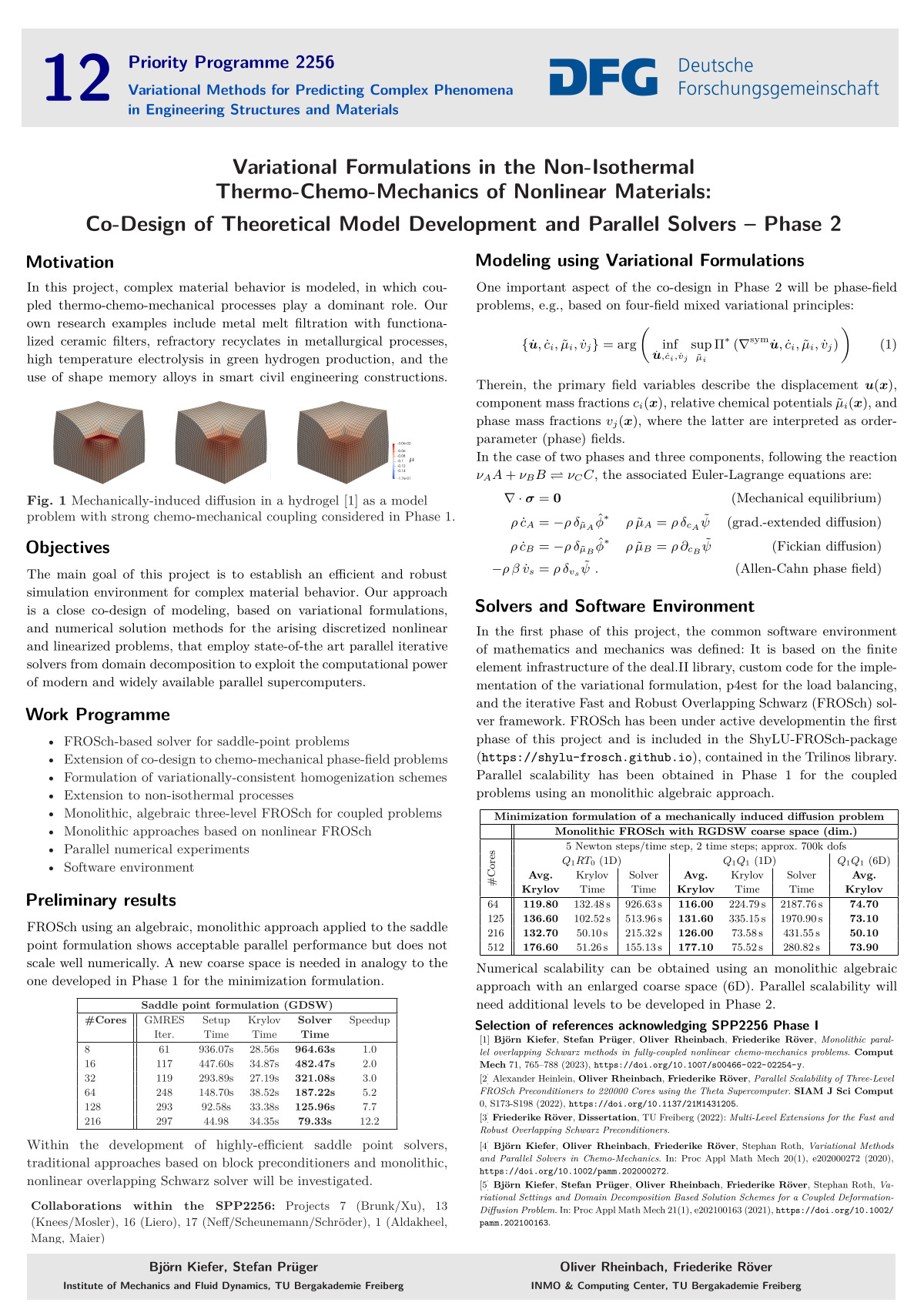We have submitted a new contribution
A Comparison of a Minimization and a Saddle Point Formulation of a Coupled Mechanics-Diffusion Problem Implemented in deal.II; Akshay Balachandran Jeeja, Bjoern Kiefer, Stefan Prüger, Oliver Rheinbach, and Friederike Röver (2024)

Formulation matters, discretization matters

We consider the mechanically induced diffusion in a hydrogel, using a minimization formulation („Min.“), using Q1RT0 and Q2RT0 finite elements, and a saddle point formulation („SP“), using Q2Q1 finite elements.
In our context, we discard the Q1RT0 discretization for the minimization formulation as it seems to converge to a different limit for our quantity of interest than all the other discretizations; see the blue circles in the figure.
Comparing the saddle point formulation (SP) using a Q2Q1 discretization with the minimation problem (Min.) using Q2RT0, both, for a time step of 0.025, the quality of interest seems to converge much earlier for the saddle point formulation, i.e., using fewer finite elements. Moreover, for the saddle point formulation the larger time step 0.1 gives the same results (up to four digits) as the finer time step 0.025. However, for the minimization formulation using Q2RT0 all computations failed due to distorted elements for the larger time step of 0.1. Here, clearly, being able to use a larger time step is a significant advantage of the SP formulation with Q2Q1. Note, however, if larger problems are considered, the large time step will fail also for the SP formulation with Q2Q1 and a time step of 0.1 due to the singularity caused by the boundary conditions. Thus a smaller time step is then also needed.
Let us we consider cases with roughly the same problem size for SP with Q2Q1 and Min. with Q2RT0, both, for a time step of 0.025. Here, we observe that fewer Newton steps are need in the SP formulation. Although the finite element assembly is slower for the SP formulation, in the end it is faster by a factor of 1.4.
However, the saddle point formulation is faster by a factor of more than 5 if a time step of 0.1 is used, which gives the same results, up to four digits, as the finer time step of 0.025.
